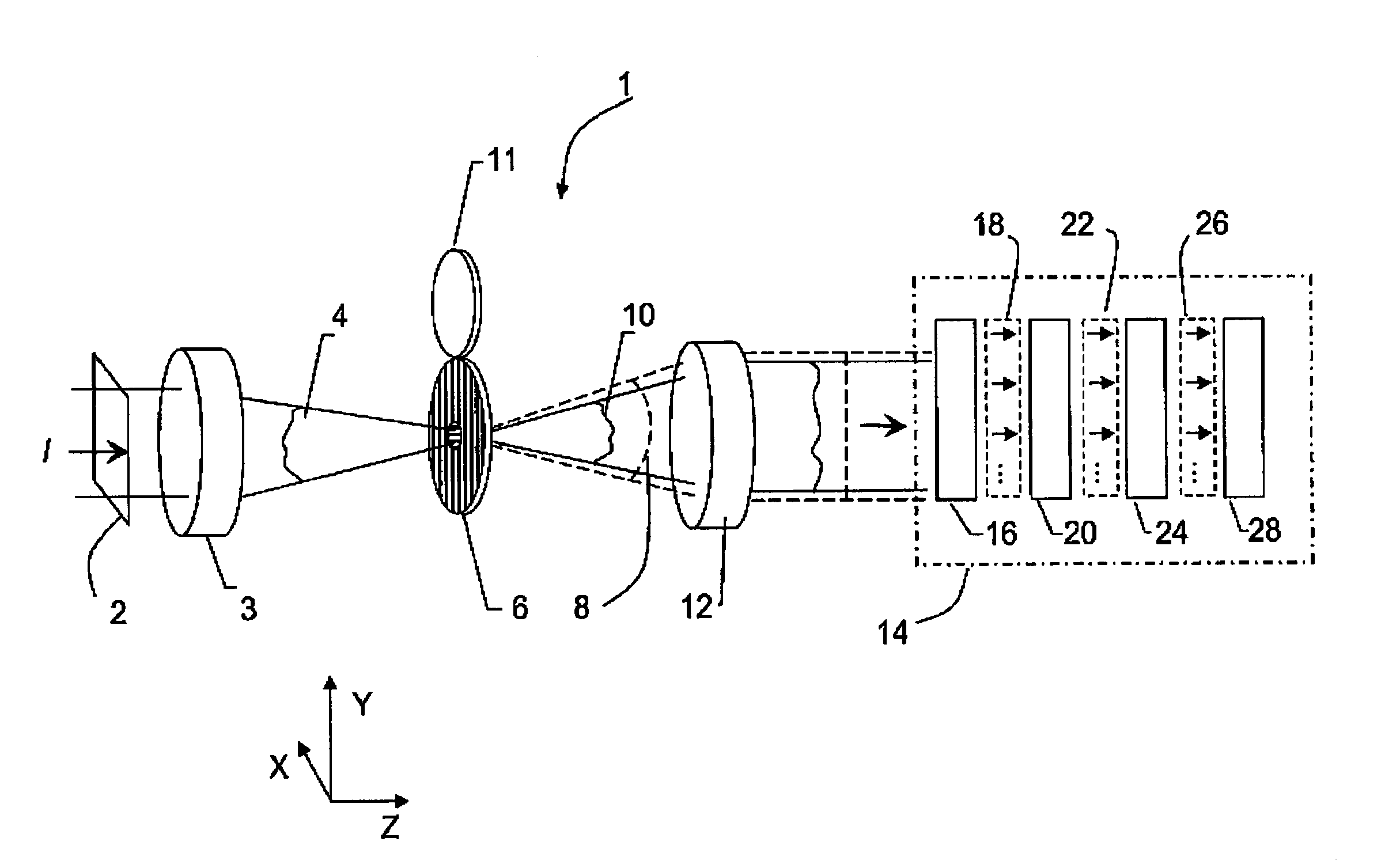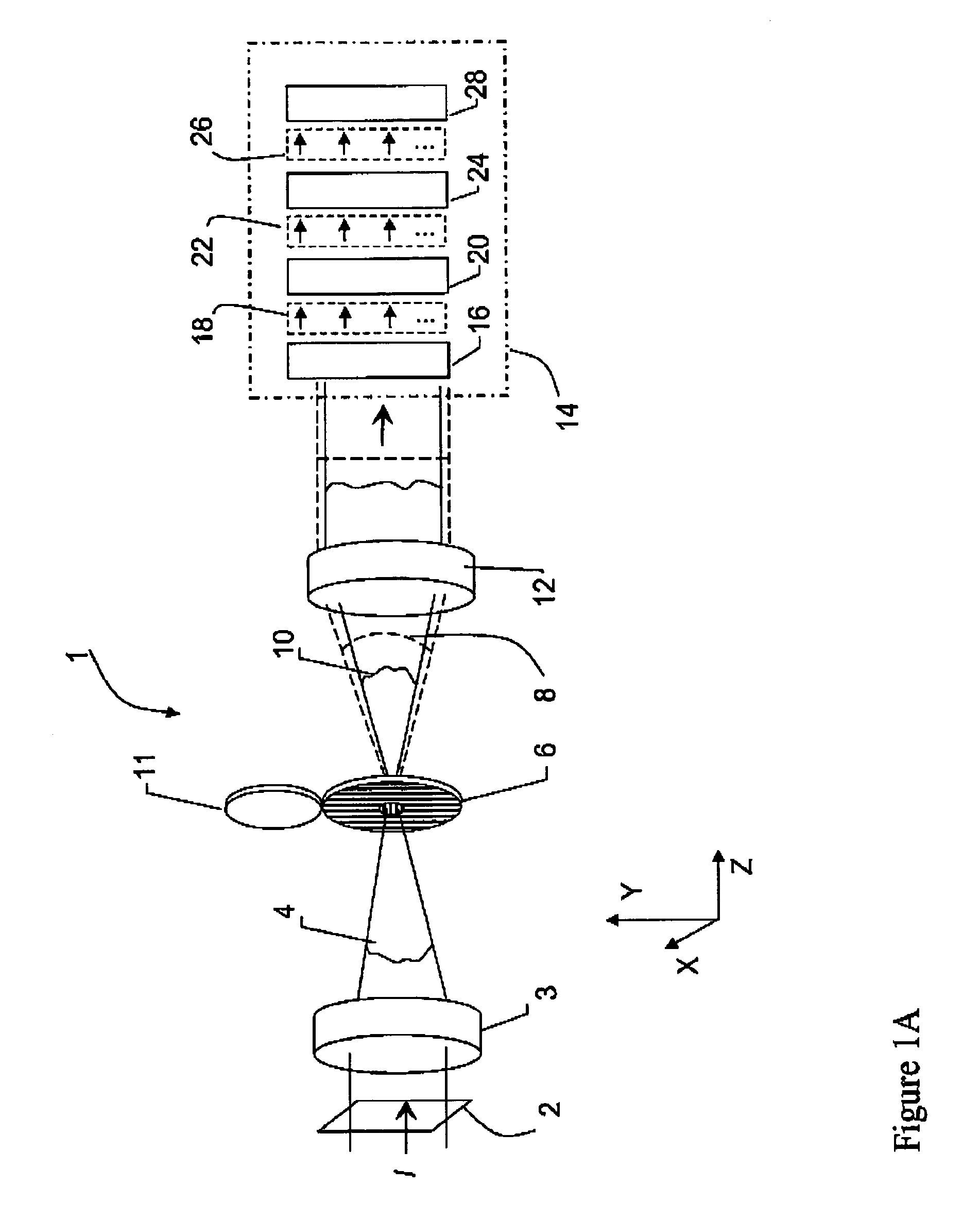Common optical-path testing of high-numerical-aperture wavefronts
a technology of optical path and wavefront, which is applied in the measurement of optical radiation, instruments, measurement devices, etc., can solve the problems of difficult construction and maintenance of high-numerical aperture point reference sources under practical manufacturing and test conditions, difficult wavefront measurements, and difficulty in high-numerical aperture point reference sources, etc., to achieve high degree of polarization and high polarization purity
- Summary
- Abstract
- Description
- Claims
- Application Information
AI Technical Summary
Benefits of technology
Problems solved by technology
Method used
Image
Examples
Embodiment Construction
[0037]In general, the invention lies in the combination of an interferometer with a polarizing PDP, as described, wherein common-path test and reference wavefronts are produced. The wavefronts are collimated, phase shifted and interfered, and the resulting interferograms are imaged on a detector. The interference patterns are then processed using any number of algorithms designed to calculate optical difference and determine the input wavefront.
[0038]The invention is particularly suited for measuring high-numerical-aperture converging beams. Such a convergent beam is first transformed by passing the light through a specially made polarization plate that produces a high-quality spherical reference wave in common path with a replica of the original test wavefront, which are polarized in mutually orthogonal directions. A variety of methods can then be used to impart a phase shift between the reference and test beams and effect quantitative interferometric measurements. For example, in ...
PUM
 Login to View More
Login to View More Abstract
Description
Claims
Application Information
 Login to View More
Login to View More - R&D
- Intellectual Property
- Life Sciences
- Materials
- Tech Scout
- Unparalleled Data Quality
- Higher Quality Content
- 60% Fewer Hallucinations
Browse by: Latest US Patents, China's latest patents, Technical Efficacy Thesaurus, Application Domain, Technology Topic, Popular Technical Reports.
© 2025 PatSnap. All rights reserved.Legal|Privacy policy|Modern Slavery Act Transparency Statement|Sitemap|About US| Contact US: help@patsnap.com



